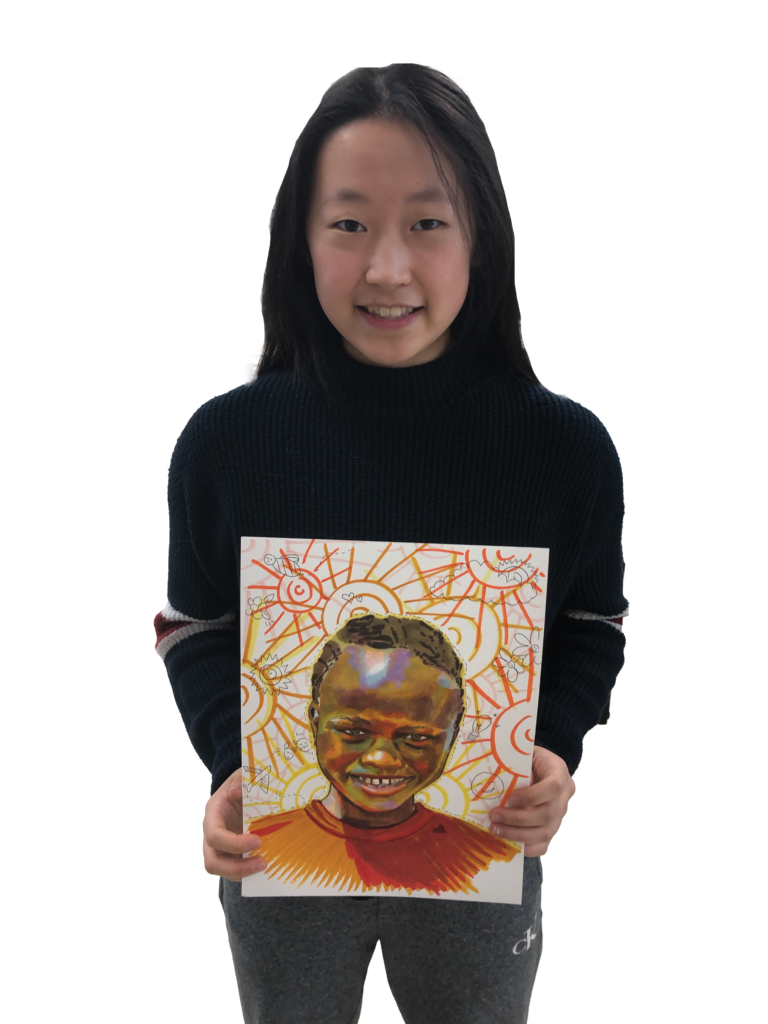MHS artists use their talents to promote inclusivity
Megan Lee | The Chronicle
The National Art Honors Society artists strive to influence inclusivity far beyond the walls of Mason High School (MHS).
Each year, students in the National Art Honors Society have the opportunity to participate in a movement called the Memory Project. This non-profit organization, based in Wisconsin, partners with different youth organizations to provide intercultural connections between children. This program has aimed to provide comfort to children through art since 2004. This year, the Memory Project has reached out to a group of children in Nigeria.
Dan McKay, the advisor of the NAHS, assigns each volunteer a child’s portrait to design. Each year McKay receives the children’s names, photos of each as well as information about their upcoming interests. Their artists are given creative freedom on how to proceed. Some choose to paint their pieces while others choose to do graphic design pieces.
“We establish a connection between a child and the artists,” McKay said. “It’s building a natural connection.”
Although the high school artists are not informed of any specifics, they are told that each kid has been exploited to violence or harm. Most of these children have been in and out of poverty and have trouble finding a consistent place to live. McKay said he is proud of the amount of Mason students who are dedicated to promoting change and well-being.
“A lot of these kids have had to be relocated,” McKay said. “Most as a result of terrorist groups or other violence.”
Each artist participating in this project knows that their art provides hope for a child in need. McKay said that in each package given to the child, they provide the piece of artwork along with a picture of the artist who made it. This relationship formed from art between the artist and the child has given hope to each creator, and hopefully, the children involved.
“The big thing with the National Art Honor Society is: how do we use art to benefit society?” McKay said. “And this project shows just that.”
These artists take their talent to the next level by taking the goals of NAHS and projecting them into each piece of artwork. McKay said this project creates a sense of responsibility in these artists to bring a source of hope to the kids.
“It’s really trying to encourage them to move through their difficult circumstances,” McKay said. “How do we promote international goodwill? How do we help children at risk? We use our artist’s talents.”
Senior Kate Lawrence has participated in two out of the three years NAHS has had this opportunity. With her dedication to the movement, Lawrence feels a personal and logistical connection to the program.
“For a project of this magnitude, sending portraits across the world, the Memory Project is a big thing,” Lawrence said.
Not knowing the exact circumstances each child is going through forces the artists to challenge themselves when they make their pieces. No matter the individual difficulties, participants are striving to make the child feel valued, loved and most importantly respected. Lawrence said this movement is the most international project NAHS does, and the artists feel the weight of that.
“I like knowing that each kid gets a little bit of something special,” Lawrence said. “The art is personal for each kid; it’s unique to them.”
The overall size of the Memory Project itself makes for an enormous number of participants. Mason is far from the only school to provide artists to this movement. Over 300,000 students in 55 countries have participated in the Memory Projects since. Ellen Zhang, the vice president of Mason’s NAHS, said she finds a sense of responsibility to make a piece that appeals to both her and the child.
“You can create a piece of artwork that replicates or stylizes the portrait, digital or traditional,” Zhang said. “We get to use our own techniques.”
With the amount of creativity taking place in the movement, artists are given room to express themselves and the child in their art. Zhang said that artists are given much more creative freedom compared to the smaller school-wide pieces they create, which create powerful pieces of art.
“Around the school, we’re constantly preparing murals and other pieces, but this is, in my eyes, the most impactful,” Zhang said.
Because of the creative freedom in these pieces, artists can add pieces of their own technique along with pieces of their own identity. Junior Anna Matu said she takes pride in the light this project brings, especially to a place that means something personal to her.
“I’m actually Nigerian so it felt like I had a personal connection to these kids,” Matu said. “Knowing that definitely influenced my process.”
Matu said she is driven to compose a piece that would influence that child to believe in themselves and to make them feel special. In order for her to demonstrate these qualities, Matu said she needed her piece to be exceptional.
“To include each small frown or smirk and bits of personality, even if they aren’t smiling in the photo, we try to make sure we make them feel seen.”
The Memory Project was composed to encourage these kids to accept themselves as they are, no matter the personality or personal experience of the child. Matu said she is grateful that she was able to influence a child’s well-being.
“To get a portrait painted just for you can change the way you view yourself and your flaws,” Matu said. “I like that it’s influencing a life after mine.”



